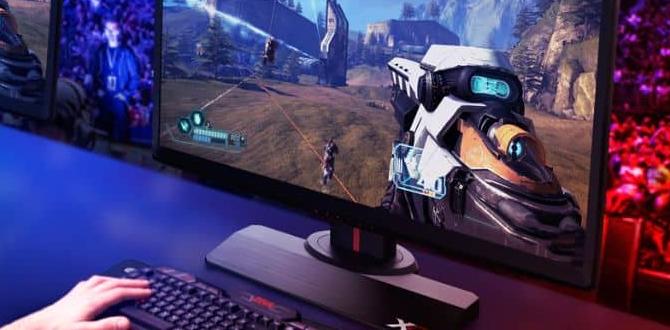When it comes to gaming, one crucial factor that can make or break your experience is the response time of your gaming PC. In the fast-paced world of gaming, every millisecond counts, and having a fast response time can give you a competitive edge over your opponents. In this article, I will delve into the significance of response time in gaming PCs and explain how it can impact your overall gaming performance.
Ideal Response Time for Gaming PCs
Defining the Optimal Response Time Range for Smooth Gaming Experience
Response time is the measure of how quickly a pixel can change from one color to another, and it is typically measured in milliseconds (ms). In the context of gaming, a lower response time is better as it means the monitor can keep up with the fast-paced action on-screen without any blurring or ghosting effects.
For gaming purposes, an ideal response time is generally considered to be around 1ms to 5ms. Monitors within this range can deliver smooth and fluid visuals, allowing you to react swiftly to in-game events without any lag or motion blur.
Factors Affecting Response Time
Describing the Influence of Hardware Components on Response Time
Several factors can influence the response time of a gaming PC, with one of the key elements being the monitor itself. Monitors with TN panels typically offer faster response times compared to those with VA or IPS panels. Additionally, the quality of the graphics card, CPU, and RAM can also impact the overall responsiveness of your system.
Strategies to Improve Response Time
Providing Tips to Enhance Response Time for Gaming PCs
To enhance the response time of your gaming PC, consider investing in a monitor with a low response time, upgrading your hardware components for better performance, and ensuring that your system is optimized for gaming. Additionally, adjusting settings such as refresh rate and resolution can also help improve the overall responsiveness of your gaming setup.
Conclusion
In conclusion, response time plays a pivotal role in gaming PCs, affecting the speed and fluidity of visual transitions on-screen. By aiming for an optimal response time range of 1ms to 5ms and considering factors such as monitor type and hardware components, you can create a gaming setup that provides a seamless and immersive experience.
FAQs
1. What is response time in gaming monitors?
Response time in gaming monitors refers to the time it takes for a pixel to transition from one color to another. A lower response time indicates faster pixel transitions, resulting in smoother visuals during fast-paced gaming.
2. How does response time impact gaming performance?
A fast response time in gaming PCs ensures that visuals are rendered quickly, reducing motion blur and ghosting effects. This, in turn, allows gamers to react faster to in-game events and stay competitive during gameplay.
3. Can changing the graphics card improve response time?
While a graphics card upgrade can enhance overall gaming performance, it may not directly impact the response time of a monitor. Response time is primarily determined by the monitor’s capabilities and the speed at which pixels can change colors.
4. Is a lower response time always better for gaming?
Generally, a lower response time is preferred for gaming as it reduces motion blur and ensures smooth transitions on-screen. However, response time is just one aspect of gaming performance, and other factors like refresh rate and resolution also play a significant role in overall visual quality.
5. How can I test the response time of my gaming monitor?
You can test the response time of your gaming monitor using online tools or by running specific tests designed to measure pixel transitions. These tests can give you an idea of how fast your monitor can render visuals and help you determine if any adjustments are needed for optimal performance.
